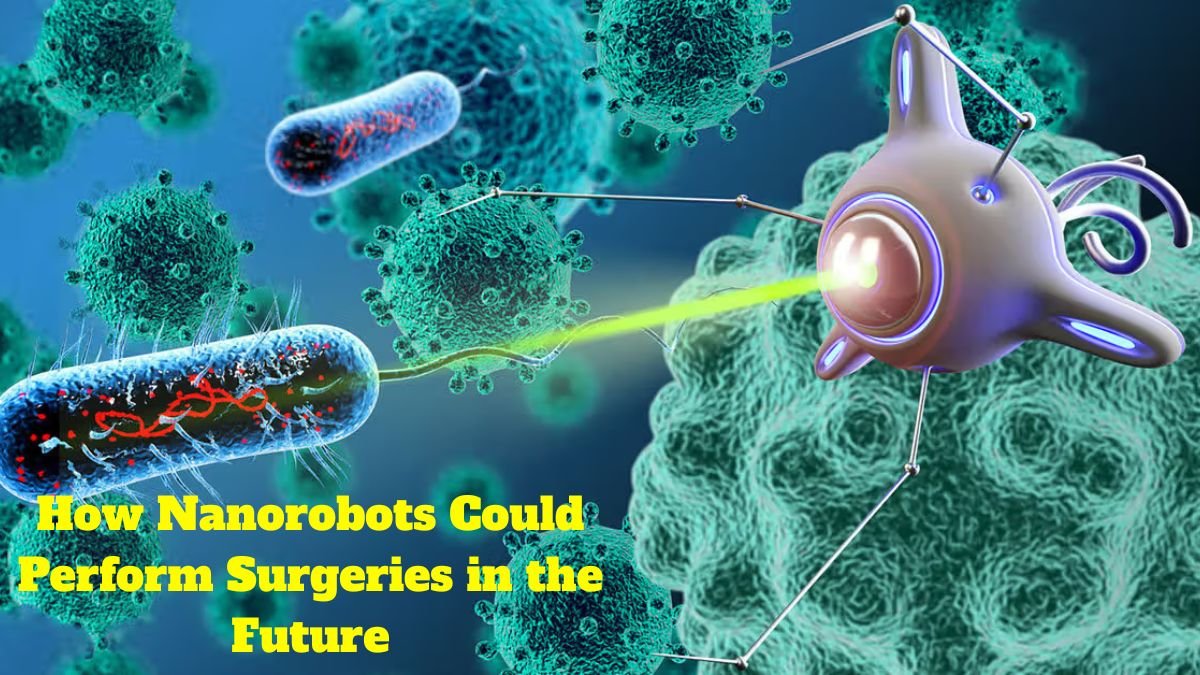Medical science is advancing at the same pace as technology. While doctors are resorting to robotic surgery today, a microscopic technology called “nanorobots” is poised to completely transform the face of surgery tomorrow. They are so small, they can be as small as a thousandth of a human hair, yet their capabilities are so vast that they can penetrate the human body and provide precise treatment.
What are nanorobots?
To understand nanorobots, it’s important to first understand “nanotechnology.” The word “nano” means extremely tiny—the size of an object equal to a billionth of a meter. Robots built on this scale are called nanorobots. These microscopic robots can move between cells, blood vessels, and tissues, deliver medications to specific locations within the body, and even repair damaged cells.
The Rise of Nanorobots in Surgery
The biggest challenge in the world of surgery today is precision and safety. A single wrong cut or decision during an operation can lead to serious complications. Nanorobots offer a solution to these challenges. In the future, doctors will simply view the inside of the body on a computer screen, and nanorobots, upon their command, will enter the body and perform the necessary surgery. This will not only increase the accuracy of the operation but also significantly reduce recovery time.
How will nanorobots perform surgery?
Imagine a patient with a tumor located deep in the body. Removing it through conventional surgery is difficult and risky. In such a situation, doctors will inject nanorobots into the body. These nanorobots will travel through the bloodstream to the site of the tumor and, using lasers or micro-tools, destroy the tumor.
During this entire procedure, the patient will not require major surgery or any large incisions. This will usher in the era of “non-invasive surgery,” where surgery can be performed without cutting the body.
The Potential of Nanorobots in Disease Diagnosis
Nanorobots can play a crucial role not only in surgery but also in the early diagnosis of diseases. They can move around the body and detect cancer cells, infections, or any other abnormality. In the future, doctors will be able to insert these nanorobots into the body and reach the root of diseases, preventing them in their early stages.
A New Era of Precision in Drug Delivery
Many diseases are difficult to treat today because the drug doesn’t reach the exact part of the body where it’s needed. However, nanorobots could be a solution to this problem.
They can carry drugs to specific areas of the body and deliver them precisely. This will increase the effectiveness of the drug exponentially and significantly reduce side effects. This technology could prove revolutionary in the treatment of diseases like cancer.
The Role of Human Control and Artificial Intelligence
Artificial intelligence (AI) and machine learning will be used to control nanorobots. Doctors will command nanorobots through a computer interface—where to go, what to do, and when to return.
In the future, these robots will become so advanced that they will be able to make their own decisions. For example, if a blockage is found in an artery, nanorobots will be able to clear it immediately, without waiting for a doctor’s instructions.
Saving Time and Cost in Surgery
Today, a complex surgery takes hours and costs lakhs of rupees. Nanorobots can transform this entire process. Since surgery will be performed without a large incision, hospitalization will be reduced, the risk of infection will be reduced, and patients will recover faster.
This will significantly reduce medical costs and allow more people to access services like surgery. This technology could also prove to be a boon for developing countries.
Challenges and Ethical Questions
While the benefits of nanorobots are numerous, they also pose some challenges. First, their manufacturing costs are extremely high. Furthermore, the safety and biological risks associated with inserting such tiny devices into the body are also concerns.
Furthermore, if nanorobots somehow lose control or reach the wrong location, they can cause serious harm. Furthermore, ethical debates are ongoing regarding human data and privacy, fearing that this technology may overstep human boundaries.
What will be possible in the coming decade?
Given the pace of science, it is conceivable that nanorobotic surgery will become a reality in the next 10–20 years. Leading research institutes and medical companies around the world are already experimenting in this direction.
Perhaps, in the future, hospitals will open new departments called “nanosurgery units,” where doctors and robots will work together to treat patients. This will be an era where surgery will be painless, fast, precise, and affordable.
Conclusion
Nanorobots are not just a technological invention, but a new dawn in human civilization’s health journey. Where surgery was once associated with fear and pain, it is now becoming easier and more precise with the help of science.
